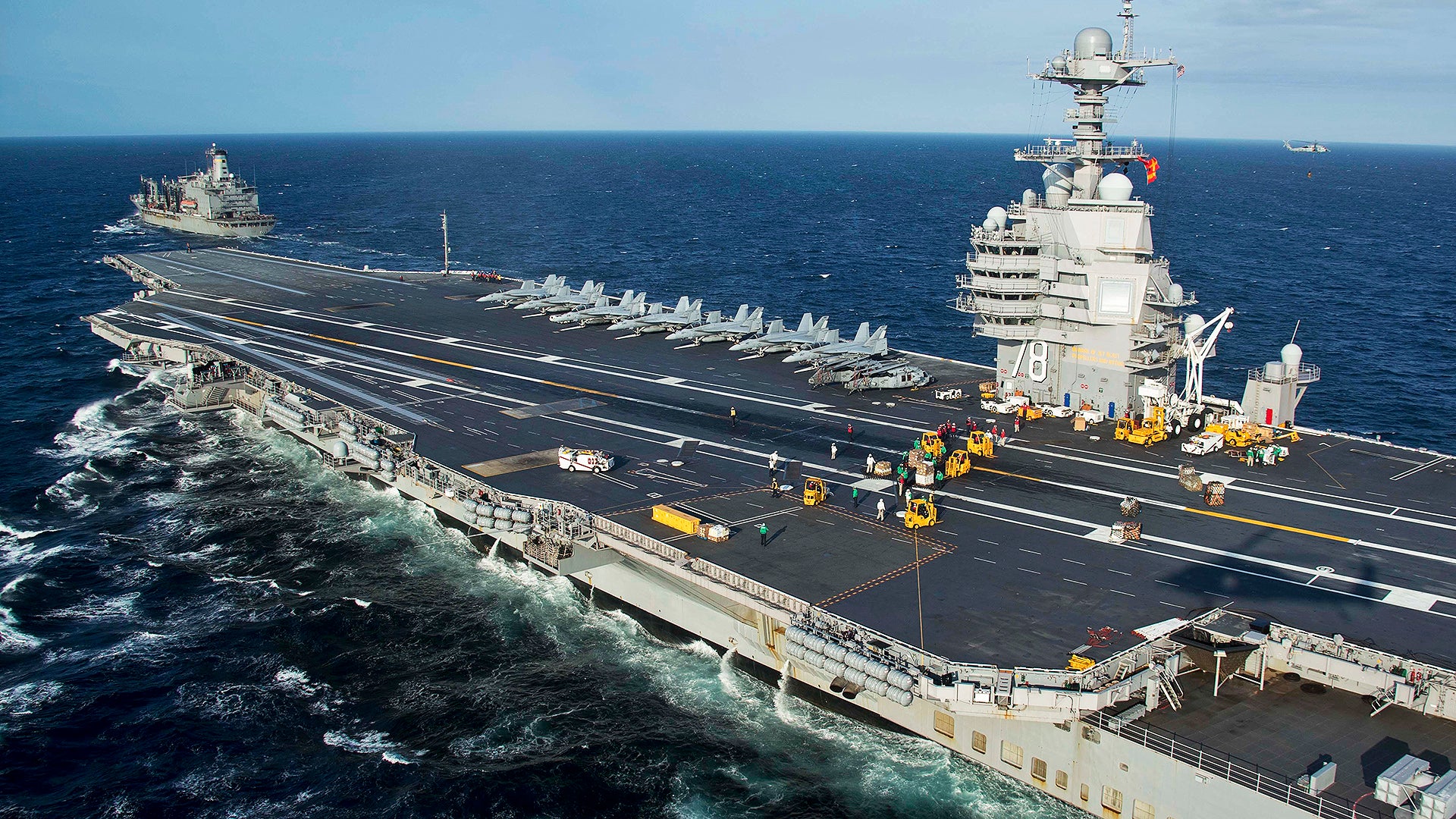For Navy Capt. Paul “Paulie” Lanzilotta, 140 feet makes a world of difference.
That’s how far the island superstructure of the $13 billion USS Gerald R. Ford has been moved to the aft on the 1,106-foot long vessel, which leads a new class of aircraft carriers, compared to what’s found on the previous Nimitz class.
Lanzilotta, who took command of the Ford a little more than a year ago, told The War Zone Tuesday that the design greatly increases the efficiency of launching aircraft, but also presents some challenges as well.
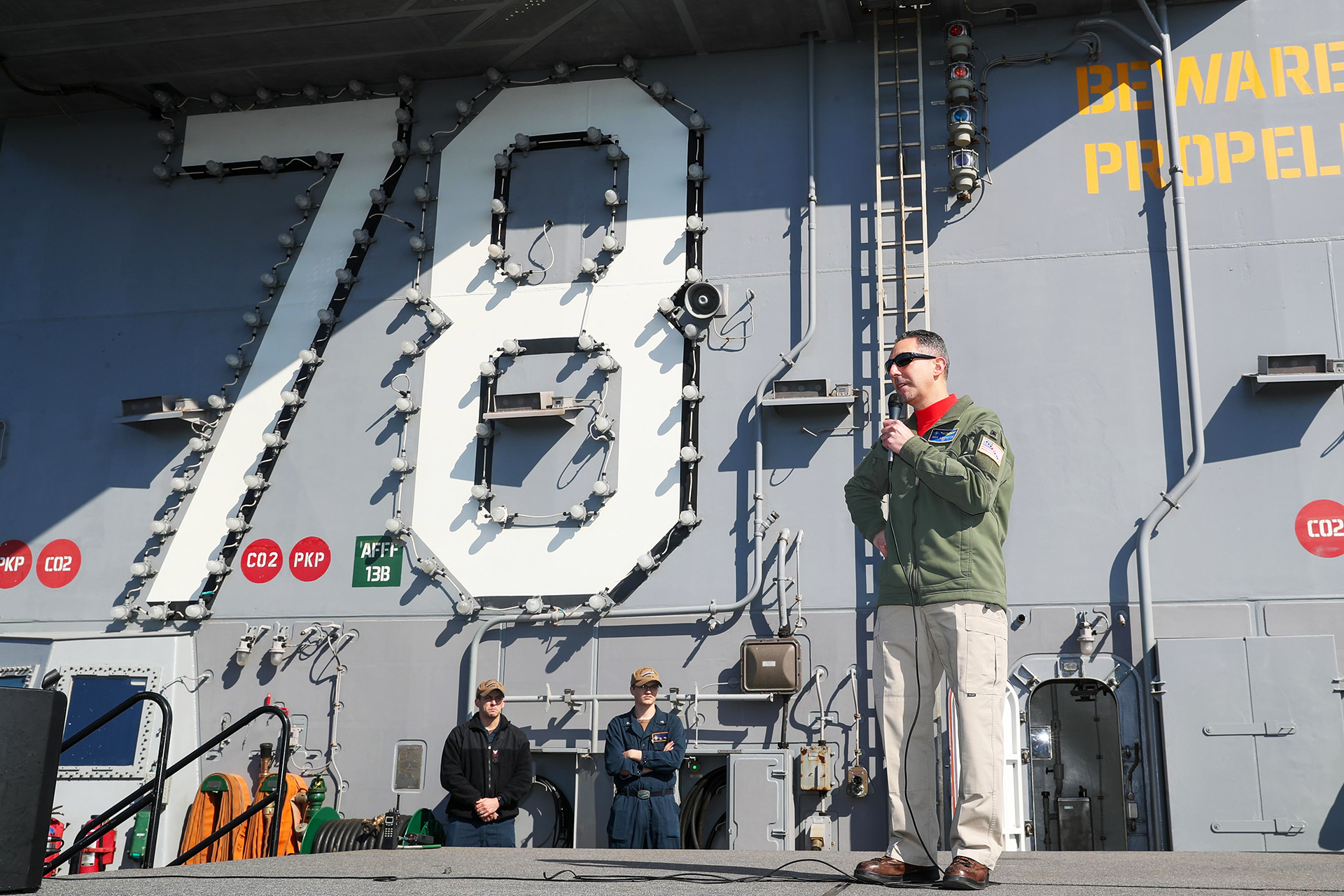
The reason that extra real estate in front of the island superstructure is so valuable, said Lanzilotta, is because it allows more room for aircraft to line up and prepare to launch.
The Navy uses “cyclic flight operations to continue to generate sorties over many hours a day,” said Lanzilotta, speaking to The War Zone after wrapping up a panel on the history of aircraft carriers at the Sea Air Space symposium. “And we do that by launching the cycle and then recovering that cycle.”
It’s a very synchronous effort and if an aircraft has an equipment malfunction or some other problem that interferes with its ability to take off, such a pause on older carriers, where the islands are closer to the bow, can impede the process.
“If you’re a little bit late, you need to troubleshoot, maybe it’s just reset a system that’s built into the aircraft, you reset the system and off you go, you can taxi to the catapult,” said Lanzilotta. “If you’re parked after the island on the older ships, you need a break in the recovery in order to do that because everything we do happens very, very quickly, very efficiently.”
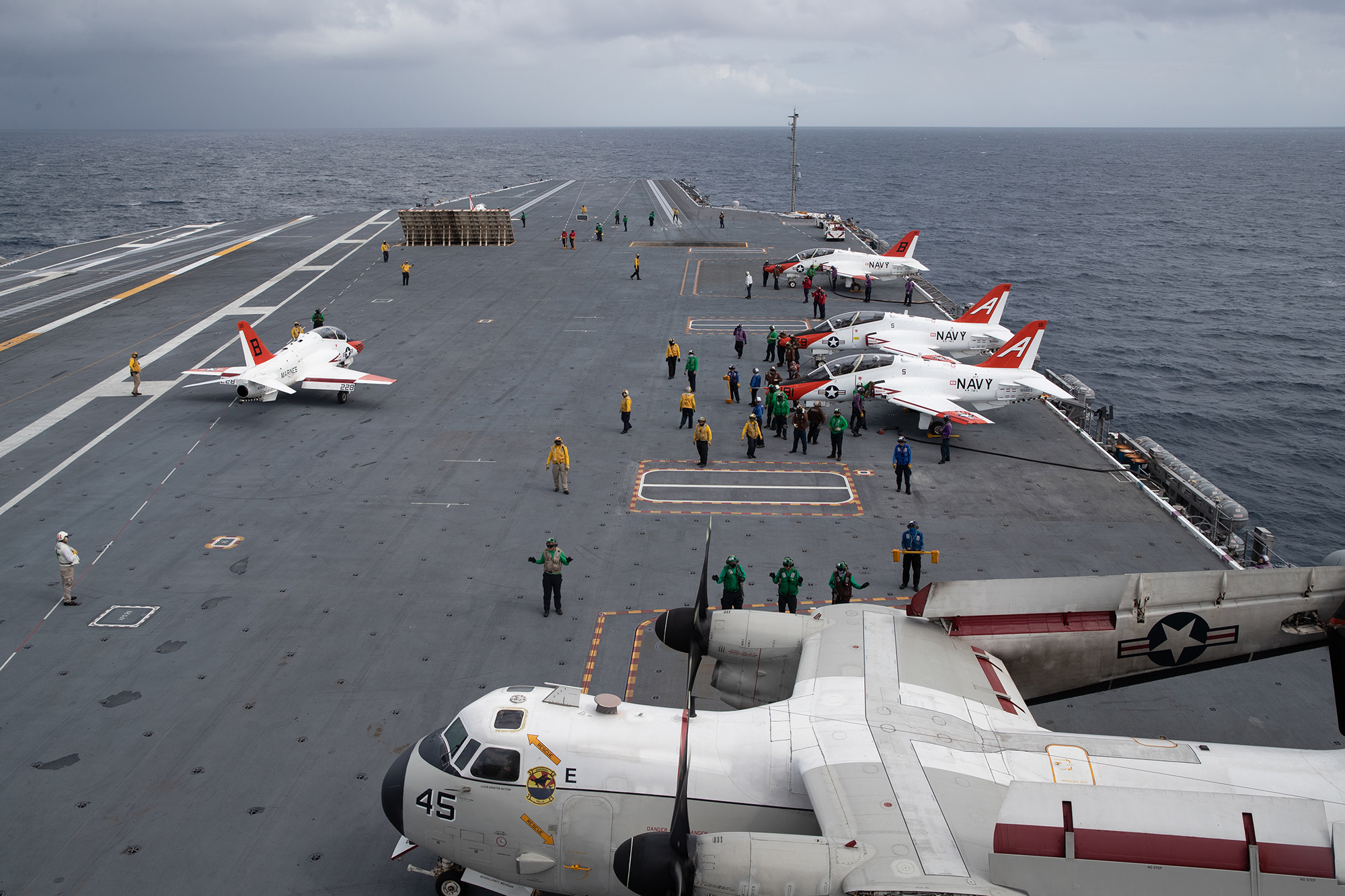
On the Ford, that extra 140 feet allows more efficient operations in the event of problems.
“So on my ship? Less likely that you’re going to need that break and a lot more likely that I can refuel you and rearm you more efficiently. It’s based on the design of where the island is plus the weapons elevators and the way we fuel aircraft.”
Unlike other carriers, the Ford – which achieved initial operational capability last December – has three elevators instead of four, but they are designed to be more efficient.
The new design, however, means less room to the aft.
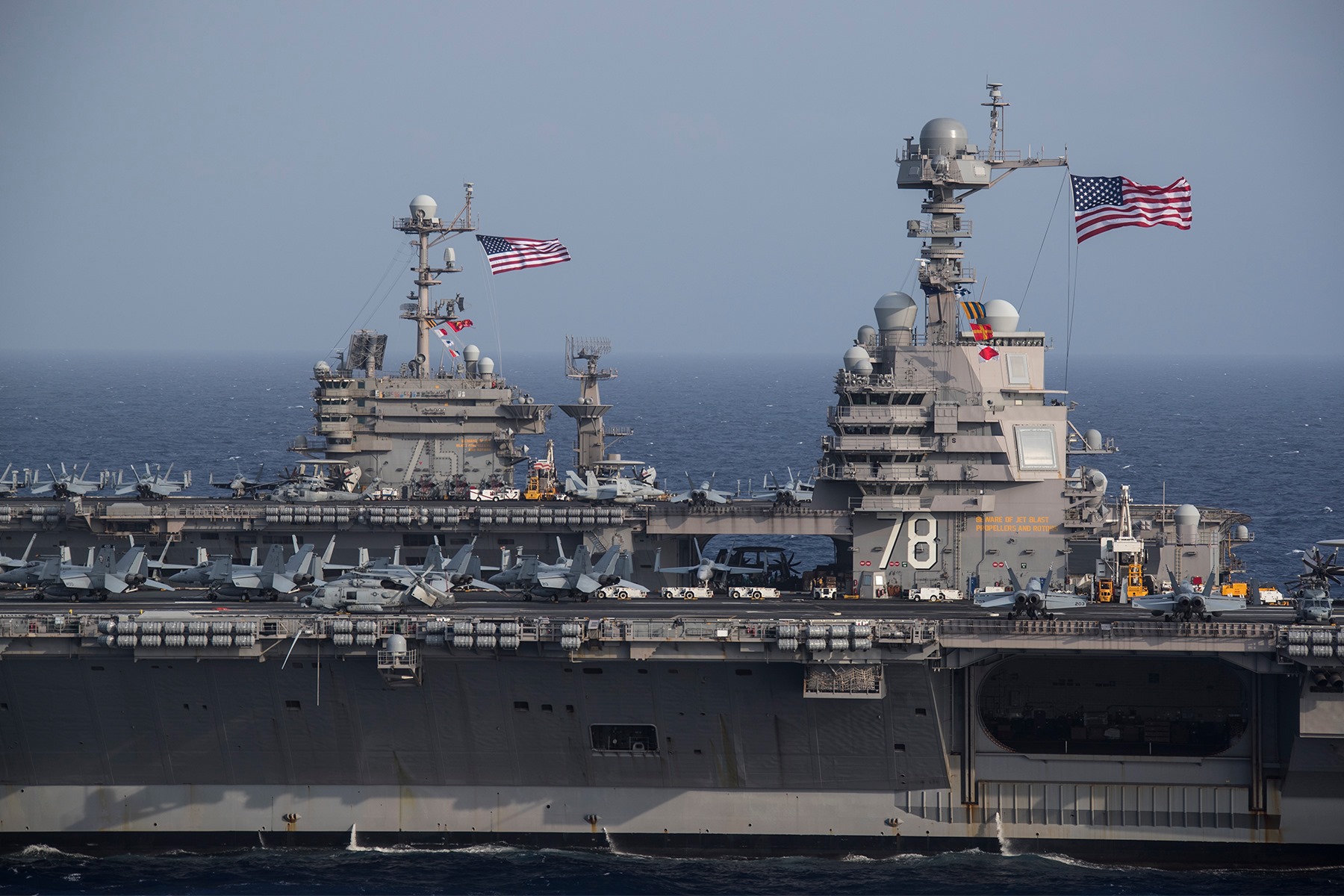
Lanzilotta does not see that as much of a problem.
“I still have room back there to park aircraft. Fly helicopters back aft of the island when we want to work and park airplanes back there.”
Another bonus with the new design, said Lanzilotta, is that the island is smaller overall.
“So if anything, I probably gained overall area on the flight deck,” he said.
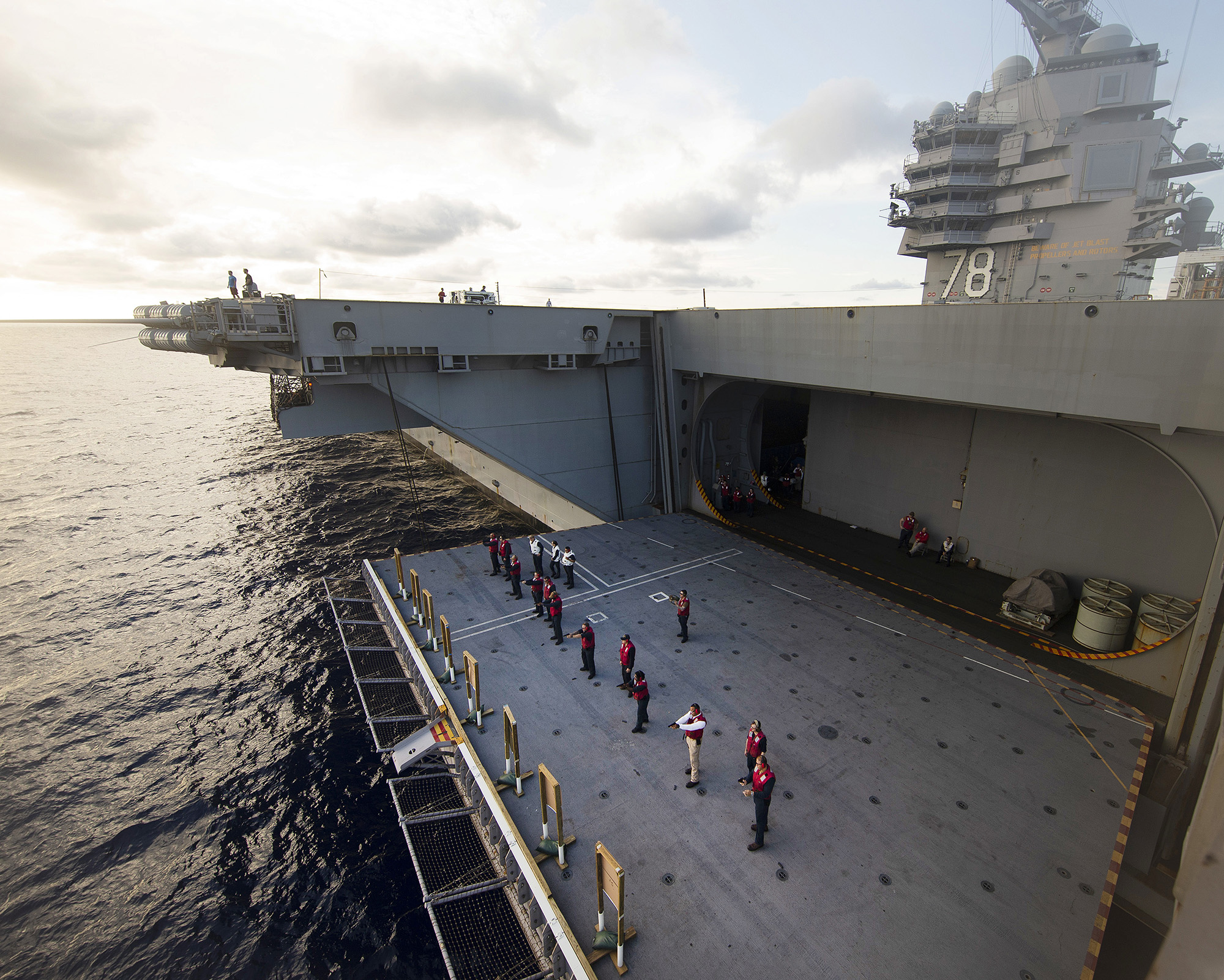
There is, however, a minor downside to moving the island closer to the stern of the carrier, said Lanzilotta. “From a ship handling perspective, being further away from the bow kind of increases the shadow zone forward,” he said. This refers to the blindspot of sorts to the front of the ship that is exacerbated by how far the island is set back on the Ford class.
That’s a challenge that “we just manage, organically,” he said, “whether it’s a sensor forward, to watchstanders that are forward, and additional assets that we naturally have with us all the time, like our helicopters, and our security boats and stuff like that… I’m amazed by how well we’re able to move in the narrow channel in San Diego Bay. It’s a great bay, but a busy one.”
There’s another asset that Lanzilotta has at his command as well.
Nuclear power.
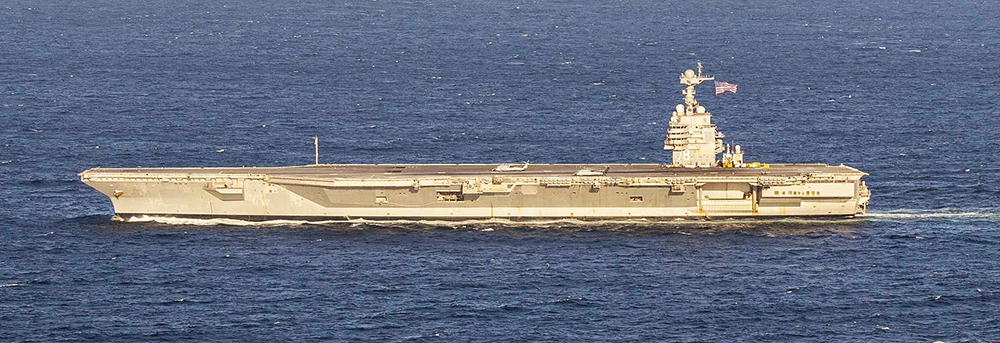
“Because the ship’s nuclear powered, I can stop my ship very, very quickly,” he said. “And very smartly, where I’ve got plenty of power to handle the ship. If I want to accelerate, I can accelerate well. When we’re in a restricted waters transit, and I’ve got long shadows in front of me, I know that I’ve got, well, a lot more power than I need to promptly stop.”
That comes in handy, he added, when boaters try something stupid.
“Sometimes there are mariners out there that aren’t very smart, and they think it’s smart to cross the bow of an aircraft carrier in tight quarters,” he said. “And I don’t know how great his engineering plant is, you know, if you’re on a small sport fisherman or something like that, if you lose your diesels right in front of me, I need to be able to stop and I know I can.”

Sometime later this year, Lanzilotta will finally get a better idea of just how well the new island design will work on the carrier’s first operational cruise, and what, if any, challenges it will create.
“I think so,” he said when asked about whether the new island design will prove more efficient. “But when we deploy later in the year we’re going to learn more and improve more. And that’s an important mindset.”
When asked what lessons he anticipates learning during that deployment, Lanzilotta waxed philosophical.
“The sailors are smarter than most of us old guys,” he said. “You know, I’ve been doing this for 28 years. So I have my own predisposed notions of how things are going. I’ve got sailors that are younger, super-intelligent, and always thinking like ‘hey, why don’t we do it like this?’ Or ‘let’s try something like that.’ So that I’m gonna stay open-minded on it. So I don’t drive the solution too much.”
Still, that doesn’t mean he doesn’t have questions about how things will go.
“I think maybe just you know, how fast can I go?” he pondered., “Not speed to the water, but how quickly can I generate sorties? What is our limiting factor? Can we work on that?“
Contact the author: Howard.Altman@recurrent.io
